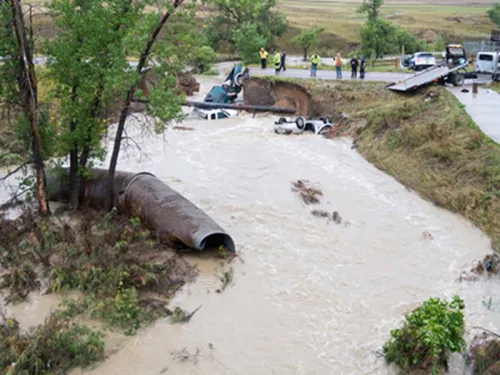Downstream flooding can be caused by spillway flows that exceed channel capacity or as a result of reservoir misoperation.
The function of a dam is to impound water for productive uses and to pass flows downstream in a controlled way. Even if a dam functions as intended, the immediate reservoir area and the floodplains downstream may be subject to significant flooding due to planned or designed operation of the dam (e.g., large spillway flows within the design capacity that exceed channel capacity), misoperation, or gate failure. Example scenarios include:
- Spillway gates are opened intentionally during a major flood in accordance with an operations plan resulting in major downstream flooding
- Improper gate operations which cause downstream or upstream flooding (and create the potential for liability)
- Spillway gates are opened accidentally through failure of automation equipment or some other unexpected occurrence
In many cases, the construction of a dam facilitates additional downstream development, and the expectations of riparian communities change. For instance, where originally there may have been no demand for flood control, communities that have been built in the floodplain downstream of a dam may now expect flood risk reduction. Post-flood incident assessments often verify normal spillway flows did not increase flood damages to downstream landowners; however, landowners are often quick to condemn the dam owner (Mauney et al. 2023).
Dam operations are often complex and influenced by many factors including dam owner organizational/operational structure, federal and state regulations and laws, water and power markets, and logistics and technology (ORNL 2019). According to the National Inventory of Dams (USACE 2023), 20 percent of U.S. dams listed include ‘flood risk reduction’ as one of the dam’s main purposes, with almost 10 percent of all dams having ‘controlled’ spillways (i.e., the dams have gates). Thirty five percent of dams with gates provide flood risk reduction.
Effective operation of spillway gates often requires actions by a dam operator, introducing risk and uncertainty. On-site personnel must react quickly, often during storms when flooding can limit access to the site or gates and compromise the availability of power. Additionally, the operation of gates requires decision-making related to releasing large flows that could cause downstream damage, typically by following a set operations plan. Interpretation of flooding potential should be considered in the decision-making process, since a delayed reaction could result in a dam safety emergency, such as overtopping of the dam (Paxson et al. 2015). Gate operations need to balance the potential for increasing outflows from operation with the potential for a dam safety emergency.
Legal Implications
The potential for liability resulting from the failure of a dam is relatively well understood. Liability in situations that do not involve a failure of the dam can be more complex, particularly for large flood events that cause damages downstream of the dam. Generally, it has been found that dam operators may allow floods to pass through the dam up to an amount equal to the inflow, although this notion has been challenged in recent cases. The basic premise behind the rule is that a downstream plaintiff would have been damaged by the flood if the dam were not there and should not be allowed to recover damages simply because of the "fortuitous" fact that a dam was built with insufficient capacity to capture the flood. Conversely, liability is incurred when releases exceed inflows. This liability is especially true when water is being diverted into the reservoir from another basin or source (Binder 2002).

Some authority also exists, based upon the general duty of foreseeability of risk, that the operator of a dam has a duty to draw down a reservoir when heavy runoff is expected. As an added caveat, even if the operator is legally free to pass the natural flow, courts may impose a duty to warn the downstream occupants of the high volumes of water that will be released. The duty of reasonable care should extend to taking steps to minimize the danger of an emergency, whether from natural or human causes, through the implementation of an emergency action plan (EAP) (Binder 2002).
Preventative Measures
The design of spillways for new dams or rehabilitation of existing dams should consider the potential for downstream flooding. Measures to reduce likelihood of misoperation should be implemented. For dams with large auxiliary spillways, the outflow from the dam can increase suddenly when the spillway engages, similar to quickly opening a gated spillway. Where feasible, the selection of a fixed crest spillway over a gated spillway may be considered. Fixed crest spillways are reliable and do not depend on the dam owner operations and the decisions that relate to these operations. Even if a gated spillway is needed based on hydraulic capacity, a supplemental, redundant fixed crest spillway will reduce risks related to gated spillway operations. Fixed crest spillways can also supplement gated spillway systems by passing initial flows to provide time for the dam operator to reach the project during a flood.
Disclosure of the non-breach risks of dam operations to the downstream (and in some cases upstream) communities is a prudent measure that should be undertaken by dam owners. Putting an effective flood operation plan in place can significantly reduce risk related to operations. A dam’s role during a flood event should be well understood; for dams not expected to provide flood risk mitigation, downstream communities should recognize and plan for this. Dam owners should still aim to provide as much warning and communication before releases as possible, and a “high flow” emergency level should be included in all EAPs.
Advances in technology and affordability now allow more efficient and effective fully automated collection and dissemination of monitoring data for dams using Automated Data Acquisition Systems (ADAS) or Early Warning Systems. These systems can be designed to monitor operational releases in addition to dam health and potential failure modes. Weather sensors can notify dam owners and operators of large storm events prior to large inflows. Reservoir and tailwater sensors can confirm inflows into reservoir and spillway releases downstream. Automated instrumentation can provide advanced notification ahead of required actions. This incident-specific information can be critical to convincing the public that an incident is occurring, and evacuation or response is necessary, and can inform dam owners and operators to allow for informed decisions on spillway operations.
Including Non-Breach Scenarios in Risk Analysis
Often, dam safety risk analyses are focused on the risk of dam failure and uncontrolled release of the reservoir. Estimating and communicating non-breach risks will help downstream communities plan for flooding and aid in decision-making during both normal and emergency operations. Broadening the scope of a risk analysis to include consideration of non-reservoir-release events that have significant consequences does not always require much additional effort. Oftentimes, much of the information needed to estimate the risk for non-breach scenarios is available from the information gathered to perform a risk analysis to estimate the incremental risk and consequences. The life safety risk associated with the non-breach inundation scenario should be assessed, communicated, and considered in guiding actions.
Planning and Resiliency
Dams serve a unique role in society – they are a valuable asset and, in many cases, provide lifeline services to communities, including water supply, power, transportation, fire protection, and flood protection. At the same time, dams can pose a unique threat in the event of failure or misoperation. Further, in the event of a disaster (where the dam is not involved and has not failed), the ability of a community to respond and recover (e.g., a community’s resilience) can very much depend on the services dams provide – clean water and power, for example.
Critical infrastructure owners have typically maintained a degree of separation from the communities where they are located. This separation manifests in a lack of sharing information with the community, particularly as it pertains to dam failure, resulting floods, releases, etc. For example, in the recent past in the USA and the U.K. it was common for dam owners (including federal dam owners) to withhold dam breach inundation maps from downstream communities that would be impacted by the flood. Reasons often centered on concerns for national security. Such practices hampered community awareness of dam related flood risks, long-term planning (e.g., zoning), and emergency preparedness.
When considering the operation of the dam’s spillway(s), in sharing the consequences of normal operations with downstream stakeholder, the dam owner may find that those stakeholders were uninformed of the dam’s operating scheme. These downstream users may find the potential consequences unacceptable and attempt to engage the dam owner in an updated planning process that would reconsider downstream land uses and dam operations. The result of this process would be an updated flood resiliency plan that would better accommodate planned dam operations. Enhancing resilience will be most successful when dam safety professionals and other community members and stakeholders identify and manage risk collaboratively in ways that increase understanding and communication of risks, shared needs, and opportunities (NRC 2012).
References:
(1) Binder, D. (2002). Legal Liability for Dam Failures. Association of State Dam Safety Officials.
(2) Mauney, et al. (2023). Operational dam safety considerations, flood risks, and legal implications: case studies and lessons learned. International Committee on Large Dams.
(3) National Research Council. (2012). Dam and Levee Safety and Community Resilience: A Vision for Future Practice. The National Academies Press.
(4) Oak Ridge National Laboratory. (2019). Current State-of-Practice in Dam Safety Risk Assessment. Prepared for US Nuclear Regulatory Commission.
(5) Paxson G., Indri, R., & Landis, M. (2015). Addressing operational risks and uncertainties for gated spillways. USSD 2015 Annual Conference Proceedings. United States Society on Dams.
This lesson learned was peer-reviewed by Bill Fiedler, P.E., HDR, and Greg Paxson, P.E., D.WRE, Schnabel.
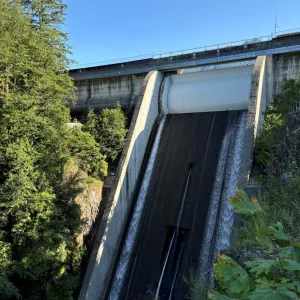
Cleveland Dam (British Columbia, 2020)
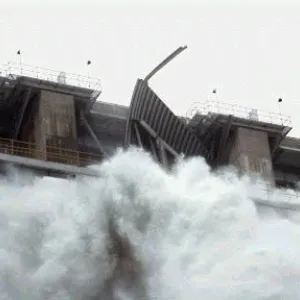
Folsom Dam (California, 1995)

Front Range Flood (Colorado, 2013)
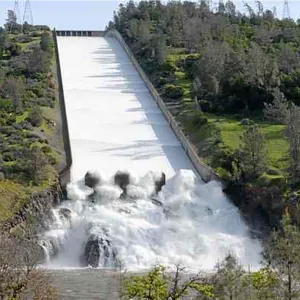
Oroville Dam (California, 2017)
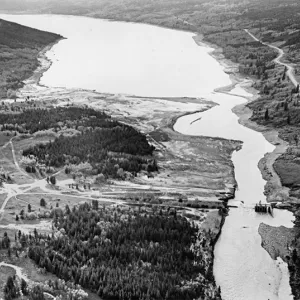
Swift and Two Medicine Dams (Montana, 1964)

Taum Sauk Dam (Missouri, 2005)
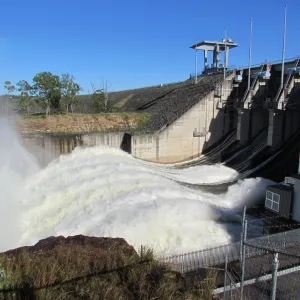
Wivenhoe Dam (Australia, 2011)
Additional Case Studies (Not Yet Developed)
- Duckett Dam (Maryland, 2014)
- Anderson Dam (California, 2017)
- Hurricane Harvey / Addicks, Barker, and Lake Conroe Dams (Texas, 2017)
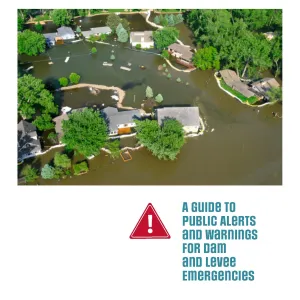
A Guide to Public Alerts and Warnings for Dam and Levee Emergencies

Guidelines for Public Safety at Hydropower Projects

Public Safety Around Dams: Best Management Practices
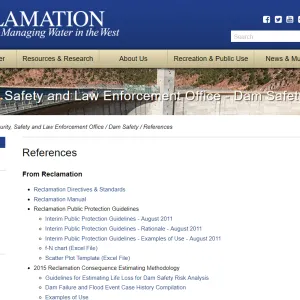
Reclamation Public Protection Guidelines

A Heightened Focus on Public Safety at Dams Does Not Happen By Accident

Developing Operation and Maintenance Manuals for Dams
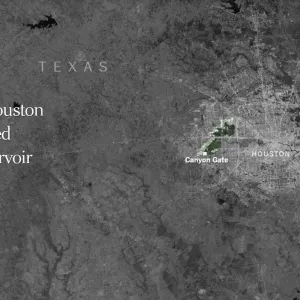
How One Houston Suburb Ended Up in a Reservoir

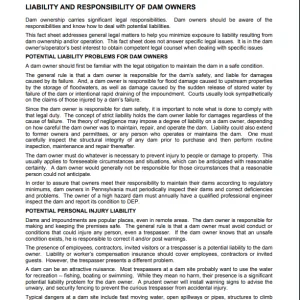
Liability and Responsibility of Dam Owners

Management of Water Control Systems, EM 1110-2-3600
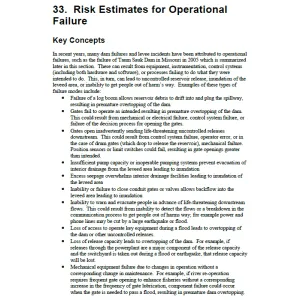
Risk Estimates for Operational Failure




